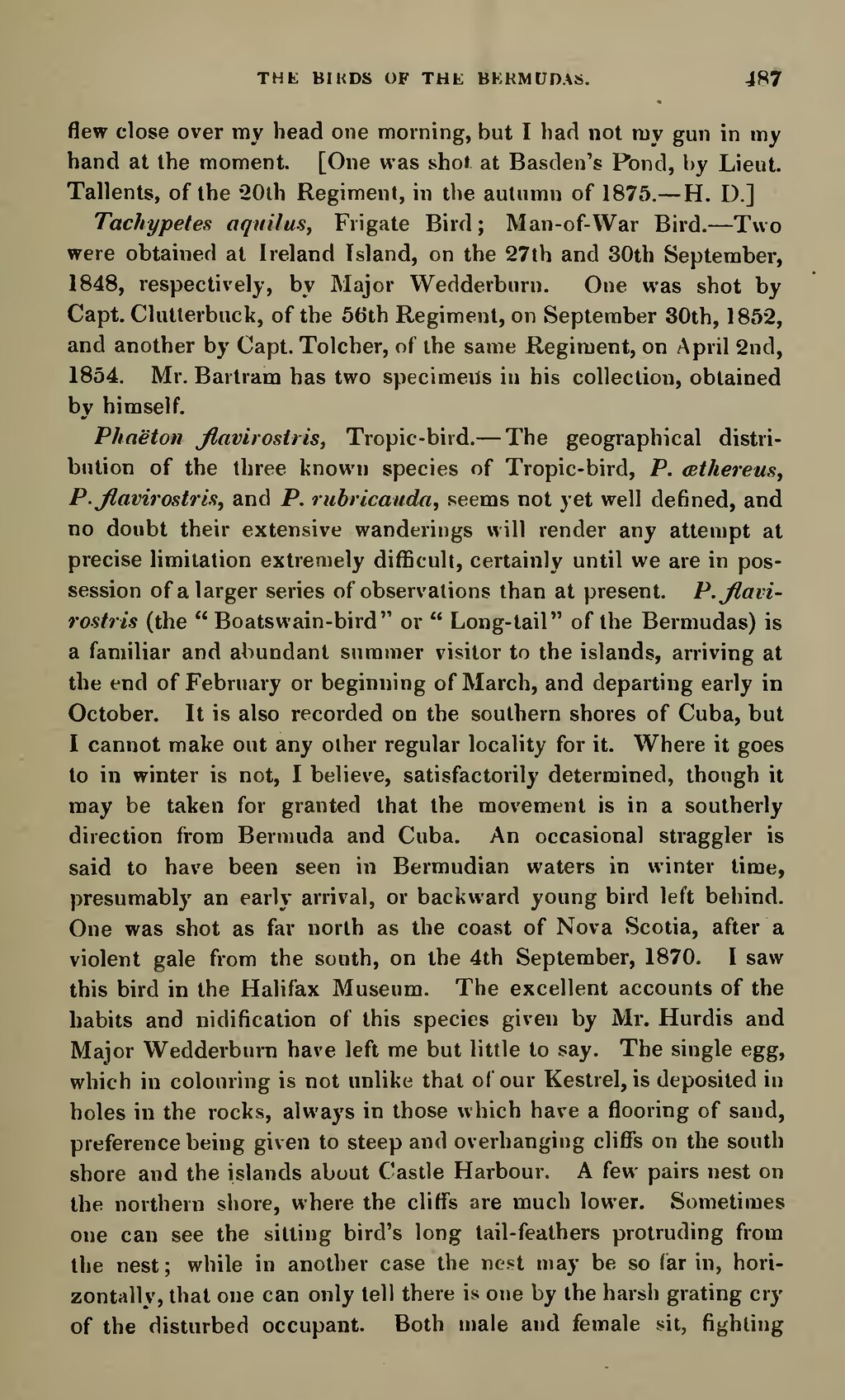flew close over my head one morning, but I had not my gun in my hand at the moment. [One was shot at Basden's Pond, by Lieut. Tallents, of the 20th Regiment, in the autumn of 1875.—H.D.]
Tachypetes aquilus, Frigate Bird; Man-of-War Bird.—Two were obtained at Ireland Island, on the 27th and 30th September, 1848, respectively, by Major Wedderburn. One was shot by Capt. Clutterbuck, of the 56th Regiment, on September 30th, 1852, and another by Capt. Tolcher, of the same Regiment, on April 2nd, 1854. Mr. Bartram has two specimens in his collection, obtained by himself.
Phaëton flavirostris, Tropic-bird.—The geographical distribution of the three known species of Tropic-bird, P. æthereus, P. flavirostris, and P. rubricauda, seems not yet well defined, and no doubt their extensive wanderings will render any attempt at precise limitation extremely difficult, certainly until we are in possession of a larger series of observations than at present. P.flavirostris (the "Boatswain-bird" or "Long-tail" of the Bermudas) is a familiar and abundant summer visitor to the islands, arriving at the end of February or beginning of March, and departing early in October. It is also recorded on the southern shores of Cuba, but I cannot make out any other regular locality for it. Where it goes to in winter is not, I believe, satisfactorily determined, though it may be taken for granted that the movement is in a southerly direction from Bermuda and Cuba. An occasional straggler is said to have been seen in Bermudian waters in winter time, presumably an early arrival, or backward young bird left behind. One was shot as far north as the coast of Nova Scotia, after a violent gale from the south, on the 4th September, 1870, I saw this bird in the Halifax Museum. The excellent accounts of the habits and nidification of this species given by Mr. Hurdis and Major Wedderburn have left me but little to say. The single egg, which in colouring is not unlike that of our Kestrel, is deposited in holes in the rocks, always in those which have a flooring of sand, preference being given to steep and overhanging cliffs on the south shore and the islands about Castle Harbour. A few pairs nest on the northern shore, where the cliffs are much lower. Sometimes one can see the sitting bird's long tail-feathers protruding from the nest; while in another case the nest may be so far in, horizontally, that one can only tell there is one by the harsh grating cry of the disturbed occupant. Both male and female sit, fighting
